Cathay Pacific Asia Miles is one of the easiest points programs to access in Canada, as it’s available via a co-branded credit card and through transferable points currencies.
In addition to booking flights with Cathay Pacific, there are some compelling partner-airline redemptions, too, with a host of oneworld airlines.
With this in mind, let’s take a deeper look at some brilliant redemption opportunities that represent great value for your Asia Miles.
In This Post
- Earning Cathay Pacific Asia Miles Is Easy
- 1. West Coast to Hong Kong and Beyond for 88,000 Asia Miles
- 2. Last-Minute American Airlines Flights to Australia
- 3. Great Pricing for British Airways Flights to Europe
- 4. Take the Long Way Around with the Ultra-Long Category
- 5. Try Cathay Pacific First Class from Hong Kong to Japan or Beijing
- 6. Long and Ultra-Long Haul Cathay Pacific First Class
- 7. First Access to oneworld Partner Awards
- Conclusion
Earning Cathay Pacific Asia Miles Is Easy
Prior to looking into redemption sweet spots, let’s remind ourselves of the various ways to access Asia Miles in Canada.
First and foremost, you can earn Asia Miles through the welcome bonus and daily spending on the Cathay World Elite® Mastercard® – powered by Neo. The historical-high offer on the card is currently at 60,000 Asia Miles, which would put you all the way or a good chunk of the way towards most of the redemptions on this list.
- Earn 35,000 Asia Miles upon card activation†
- Plus, earn 25,000 Asia Miles upon spending $5,000 in the first three months†
- Then, earn 4 Asia Miles per dollar spent on Cathay Pacific flights†
- And, earn more Asia Miles at Neo's partners†
- Enjoy a 15% discount on Cathay Pacific flights†
- Minimum income: $80,000 (personal), $150,000 (household)
- Annual fee: $180
Furthermore, RBC Avion points transfer to Asia Miles at a 1:1 ratio. We’ve also seen the occasional transfer bonus to Asia Miles in the recent past, which is something to look out for to get outsized value from your points.
Plus, you can supercharge your Asia Miles earning rates on daily spending by building an Optimized RBC Credit Card Portfolio, which includes the RBC® ION+ Visa and any RBC Avion credit card.
Meanwhile, American Express Membership Rewards transfer to Asia Miles at a 1:0.75 ratio.
While the ratio is less lucrative than that of RBC Avion, the juicy welcome offers on most Membership Rewards credit cards and the supercharged earning rates on the American Express Cobalt Card should make up for much of the difference.
| Credit Card | Best Offer | Value | |
|---|---|---|---|
|
130,000 MR points
$799 annual fee
|
130,000 MR points | $1,794 | Apply Now |
|
70,000 MR points
$250 annual fee
|
70,000 MR points | $1,676 | Apply Now |
| 110,000 MR points | $1,581 | Apply Now | |
|
40,000 MR points
$199 annual fee
|
40,000 MR points | $846 | Apply Now |
| 15,000 MR points | $372 | Apply Now | |
| 10,000 MR points | $242 | Apply Now |
It shouldn’t take too long to pad your Asia Miles balance, and once you’ve built up a nice little stockpile, your attention should then turn to redeeming them effectively.
If you’d like some expert tips on optimizing your earning and redeeming of Asia Miles, join us in the Prince of Travel Community. You’ll have access to some of the most engaged loyalty enthusiasts in the country, as well as experts from the Prince of Travel team.
Join the Prince of Travel community to connect with like-minded Miles & Points enthusiasts, learn directly from the experts, and much more!
1. West Coast to Hong Kong and Beyond for 88,000 Asia Miles
Asia Miles uses distance- and class-based pricing for flights on its own metal. As you’d expect, you’ll pay more in miles as you travel in higher classes of service, and as you travel farther distances.
It no longer officially publishes an award chart – which is frustrating – but we know that flights between Hong Kong and North America fall into two distances:
- Long-haul (5,001–7,500 miles): 88,000 Asia Miles in business class
- Ultra-long haul (7,501+ miles): 115,000 Asia Miles in business class
Flights to or from cities in Western North America, including Los Angeles, San Francisco, and Vancouver, cost 88,000 Asia Miles.

Plus, if you fly from Vancouver, you’ll have about 1,100 more miles to fly before you cross into the ultra-long-haul threshold.
This leaves a number of destinations in Asia accessible at 88,000 miles, including Bangkok, Manila, Beijing, Shanghai, Ho Chi Minh City, Hanoi, and more.


Fortunately, Cathay Pacific is operating its latest business class product – Aria Suites – on the Hong Kong–Vancouver route as of June 5, 2025.

These days, competition for transpacific awards in premium cabins is fierce. Asia Miles offers the only meaningful way to access Cathay Pacific premium cabins, and award availability has improved.
If your travel plans take you to East and South East Asia, be sure to keep an eye on awards in the 88,000-mile price range.
2. Last-Minute American Airlines Flights to Australia
In addition to flights with Cathay Pacific, Asia Miles offers access to other airlines in the oneworld alliance.
If you have your eyes set on Australia – which is another destination for which competition for premium award travel is fierce – consider looking for redemptions with American Airlines to Australia with Asia Miles.

While you’re unlikely to find awards available through Asia Miles in advance, availability for last-minute flights is pretty good. This is a great option to have at your disposal if you’re unable to find award flights with other programs, such as Aeroplan.
American Airlines offers non-stop flights from Los Angeles to Brisbane and Sydney, as well as from Dallas to Brisbane. There’s also a route that connects Los Angeles with Auckland.
The easiest way to search for these routes is to use the calendar view on American Airlines AAdvantage website. Simply enter your origin and destination, tick the “Redeem miles” box, choose your number of passengers, and then hit “Search”.

On the results page, select “Calendar”, make sure “Business/First” is toggled, then look for dates that have even numbers (such as 80,000 miles or 95,000 miles) as an option. (American Airlines AAdvantage uses dynamic pricing, and the even numbers tend to be ones that are “Saver”-level prices).
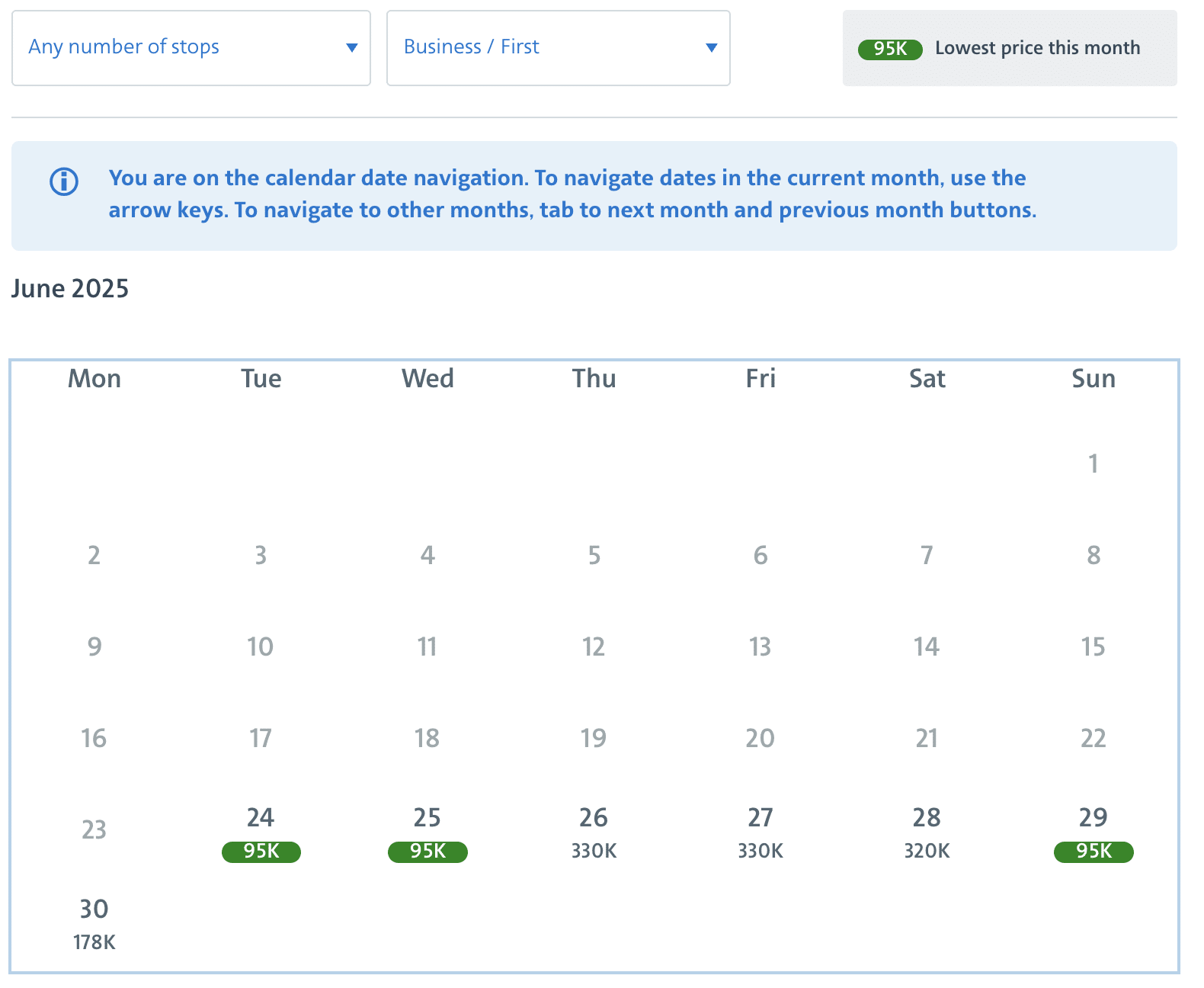
Once you’ve found a flight that works for you, double-check that it’s also available on the Asia Miles website. It should price out at 89,000 Asia Miles, which is an excellent price for 15+-hour flight in business class.
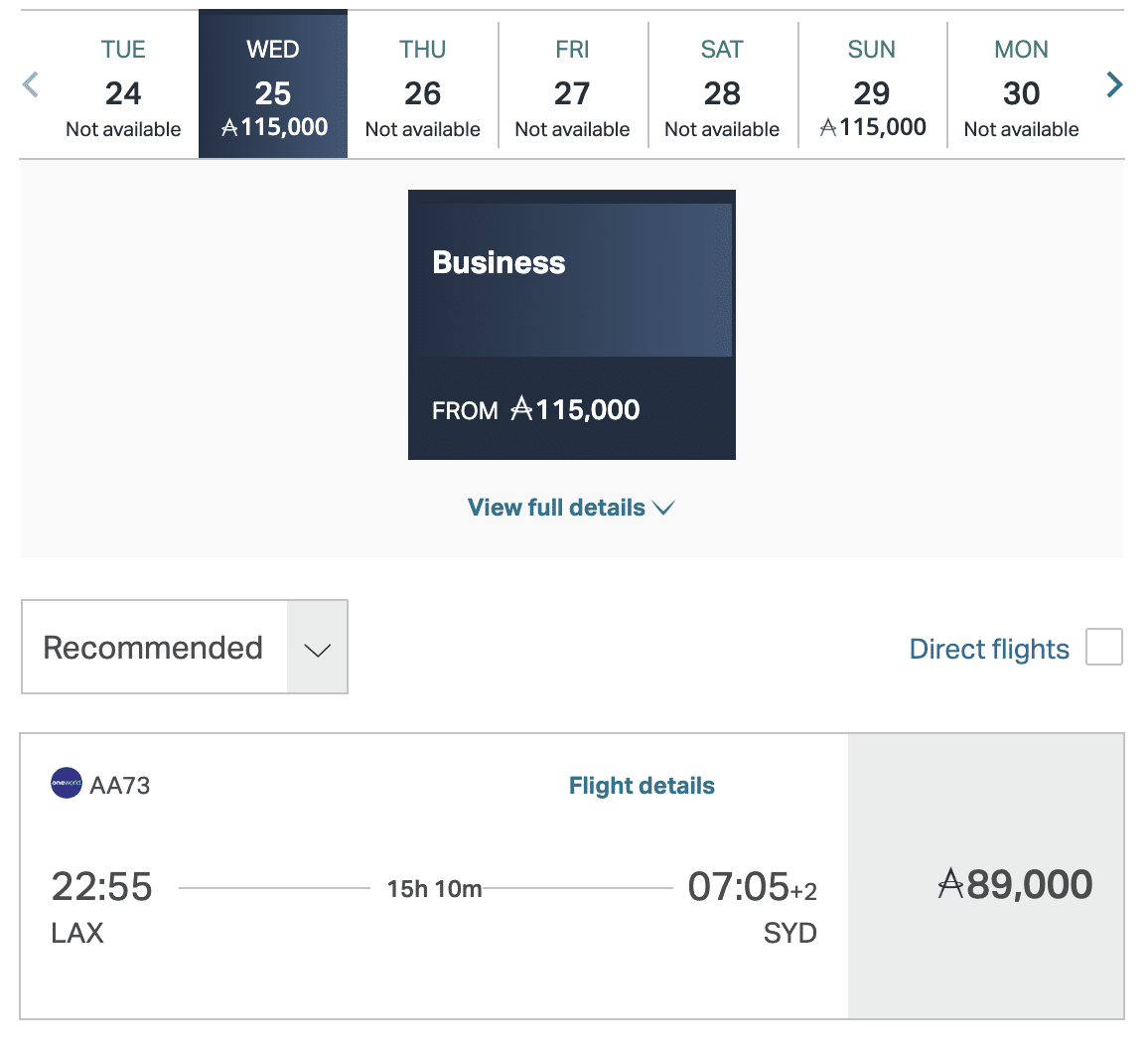
The downside to this is that you’ll have to wait until the last minute to book, so you may want to have a refundable backup option booked instead, and then be ready to pounce when you see something that you like pop up as available.
American Airlines isn’t necessarily known for having the best premium cabin products out there; however, it’s a great option at a competitive price to consider if you’re not finding luck anywhere else.
3. Great Pricing for British Airways Flights to Europe
Another excellent use of Cathay Pacific Asia Miles will take you across the Atlantic instead of the Pacific.
If you’re headed to London (or to Europe), be sure to consider redeeming Asia Miles for an award flight with British Airways using your Asia Miles.
As a reminder, British Airways levies a significant amount of taxes and fees onto its own flights booked through The British Airways Club. Depending on how you structure your redemption, you could wind up forking over more than $1,000 for a business-class redemption, in addition to the points you use.
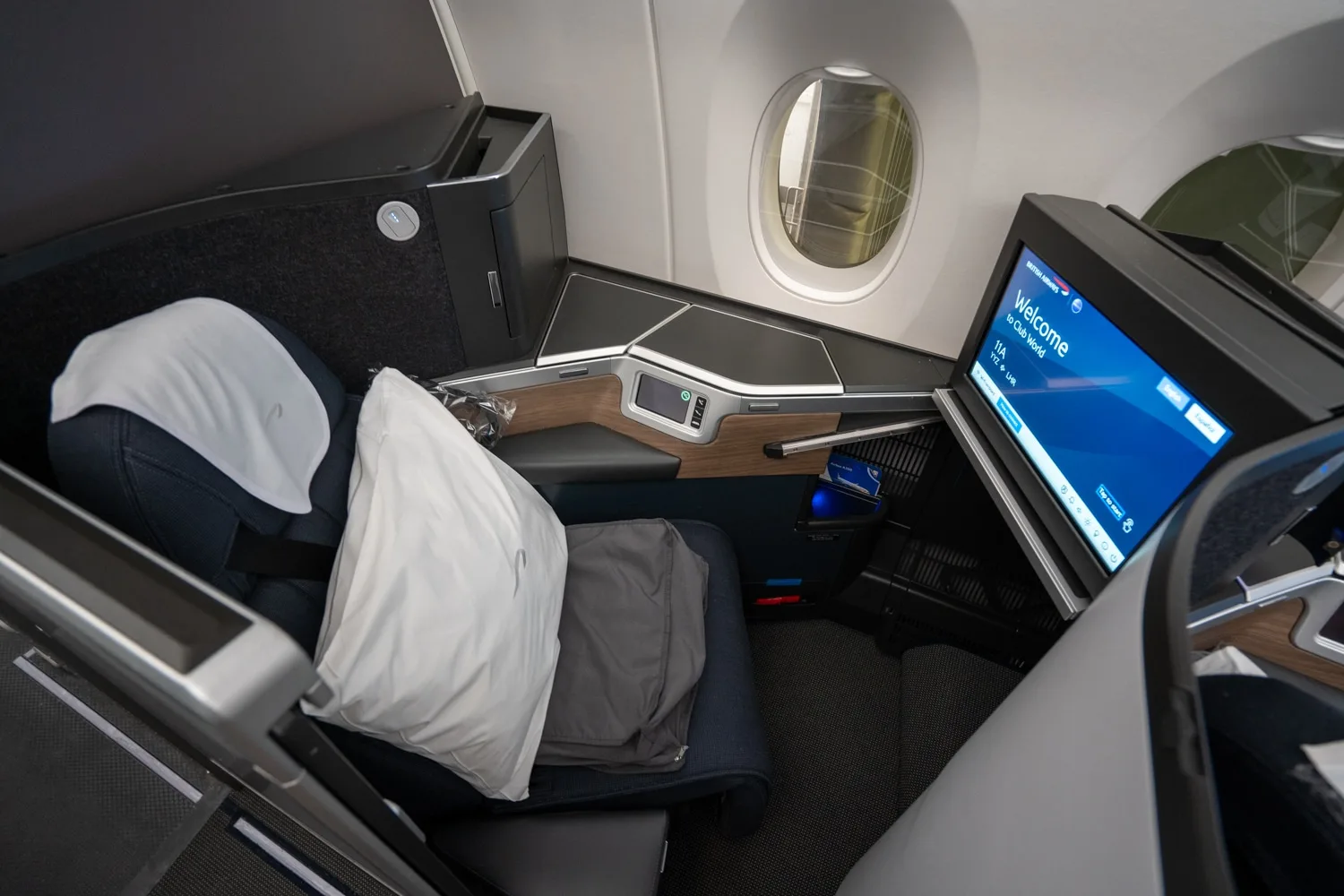
However, you can book those same flights with Cathay Pacific Asia Miles for a competitive cost in miles, plus a much lower amount of taxes and fees.
For example, a one-way flight with British Airways in business class from Toronto to London costs 80,000 Avios plus $375 in taxes and fees for a Reward Flight Saver booking, or 50,000 Avios plus $890 at the standard rate. There are also other combinations of Avios and cash to choose from.
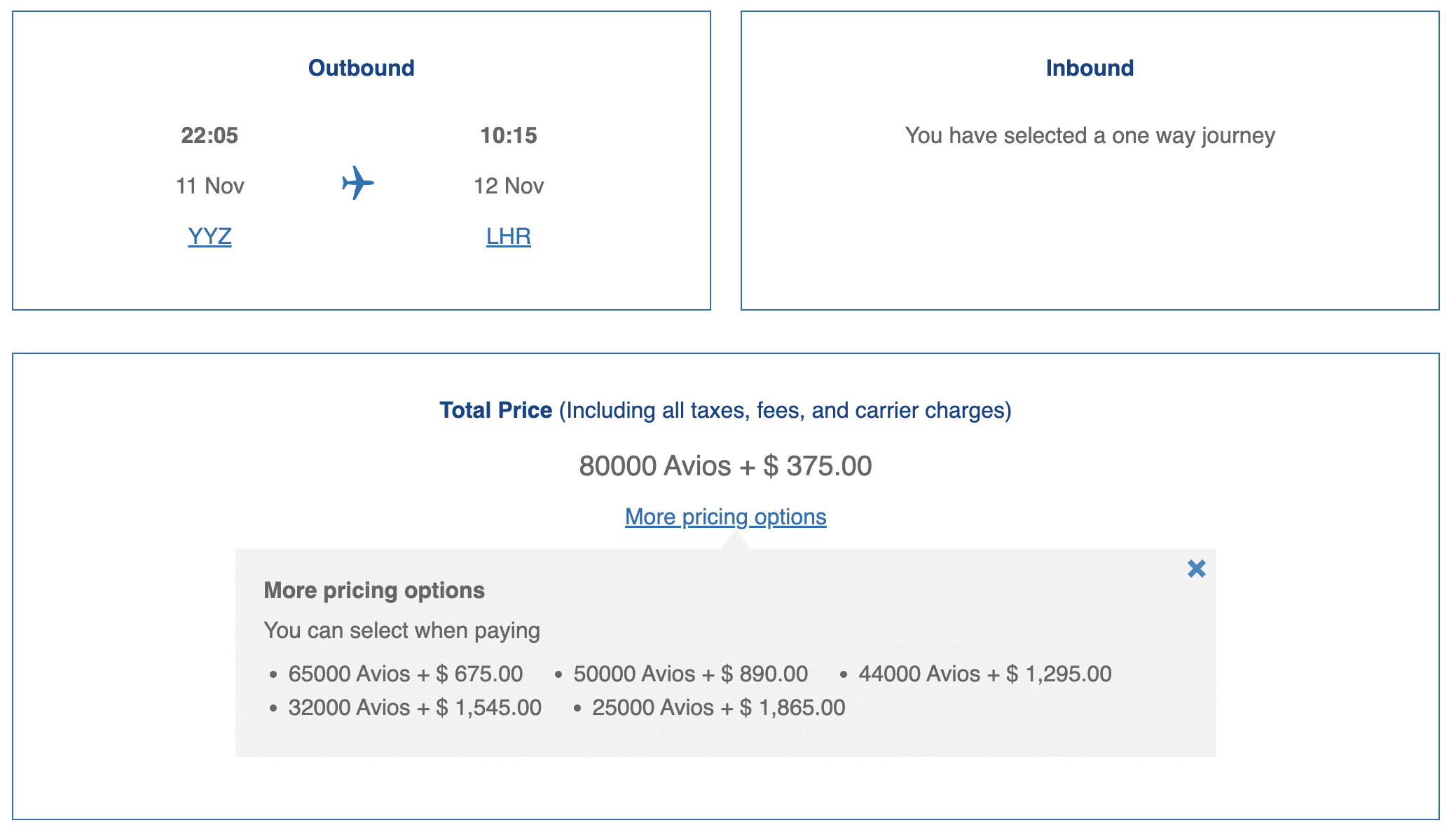
That same flight booked with Asia Miles costs only 63,000 miles plus $390 in taxes and fees.
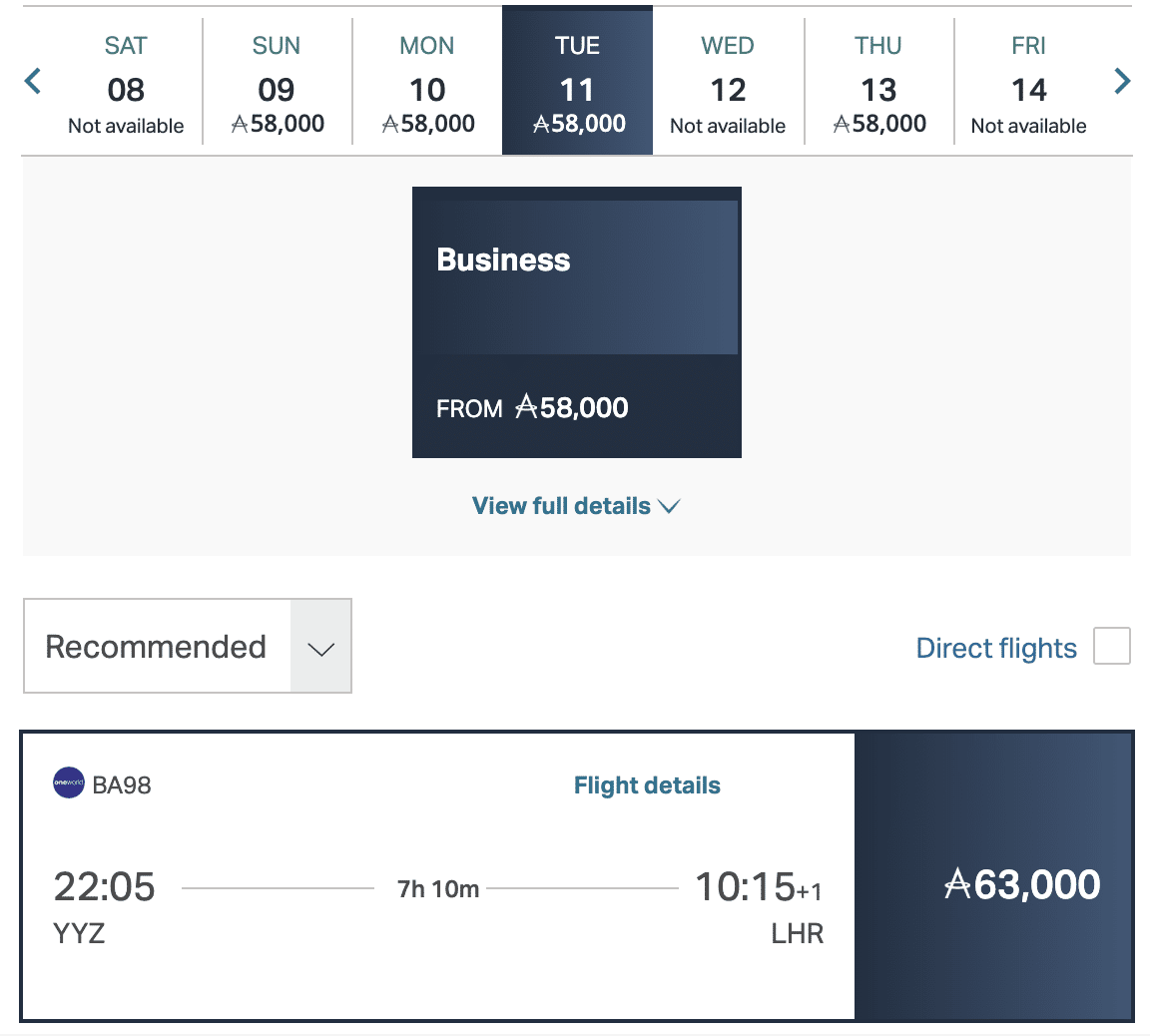
In other words, you’d have to redeem 17,000 more Avios to pay the same amount of taxes and fees, but why pay more for something if you don’t have to?
4. Take the Long Way Around with the Ultra-Long Category
As mentioned above, Cathay Pacific uses a distance-based system for pricing awards.
What’s important to know is that the final distance band – Ultra-Long – includes any flights that measure 7,501+ miles. This means that any valid itineraries that you can find that are over 7,501 miles will have the same price: 115,000 miles in business class.
For example, you could fly from Toronto to Hong Kong for 115,000 Asia Miles in business class, since the flight measures roughly 7,810 miles.

However, you could also continue onward to, say, Australia, and still pay just 115,000 miles with both flights in business class…
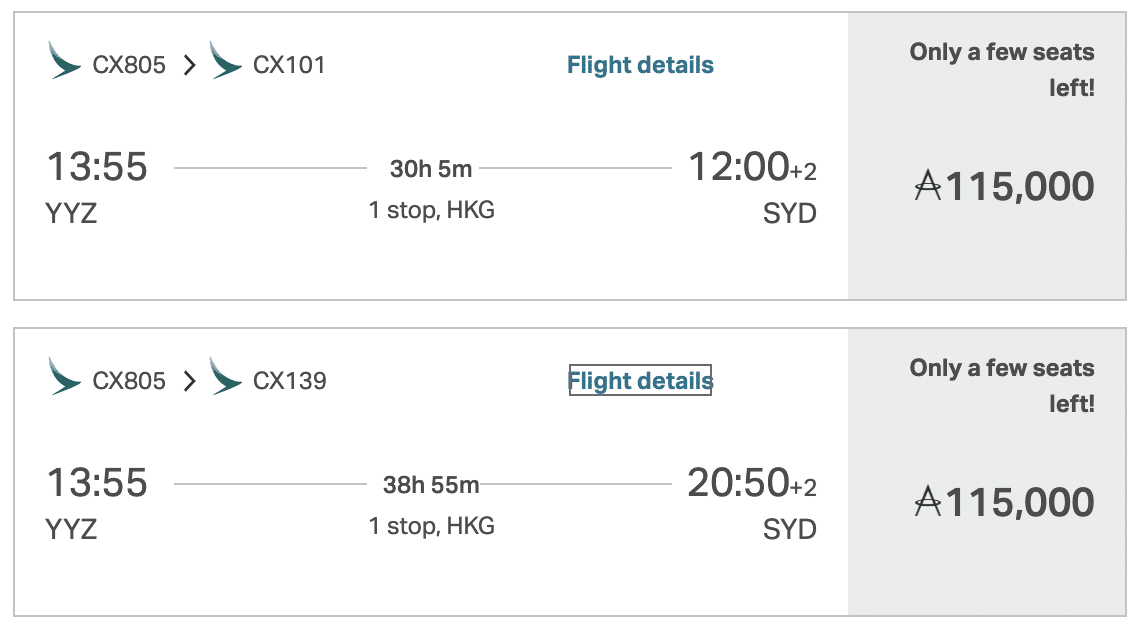
This also works for taking the long way from Toronto to Johannesburg via Hong Kong…

Alternatively, you could route through Europe or the Middle East with a oneworld partner, and then continue onward to Hong Kong, again for just 115,000 miles.
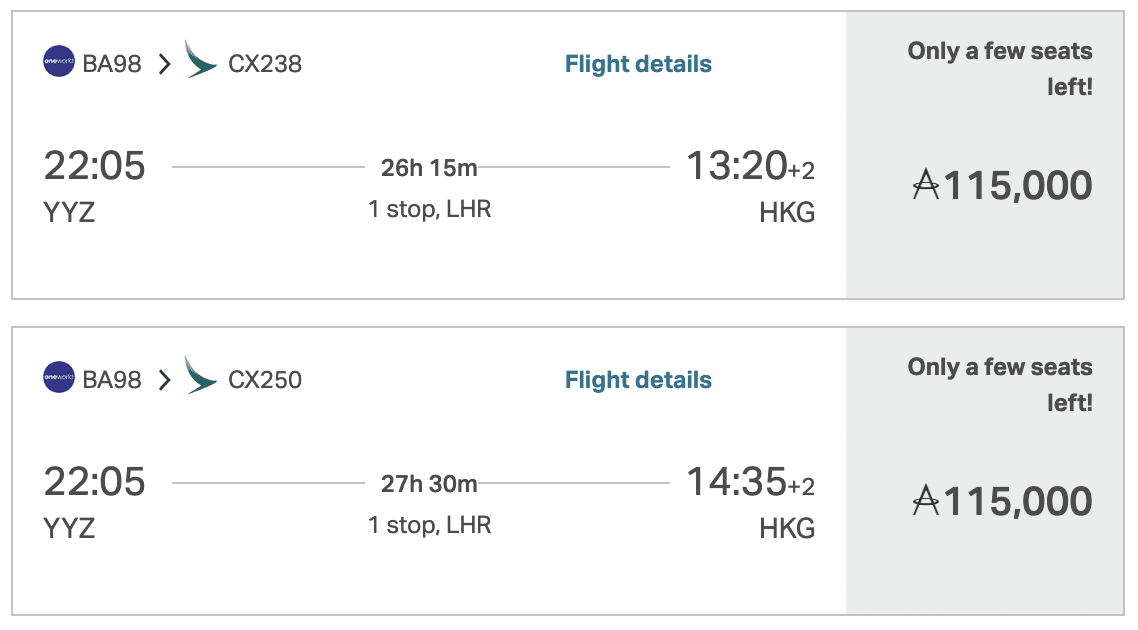
There are plenty of ways to extend your flying time with Cathay Pacific by leveraging the Ultra-Long category – your only limit is going to be finding back-to-back long-haul flights with award availability.
5. Try Cathay Pacific First Class from Hong Kong to Japan or Beijing
Cathay Pacific offers First Class on only a handful of routes. At the time of writing, these include Beijing (PEK), Tokyo (HND), London (LHR), New York (JFK), and Los Angeles (LAX).
Of these, the most affordable options are to fly between Hong Kong and Beijing or Tokyo, which price out at 43,000 Asia Miles or 50,000 Asia Miles, respectively.


Cathay Pacific First Class award availability to Beijing is quite easy to find, whereas finding availability to Tokyo is a bit harder to come by.
Fortunately, it’s easy to spot the days on which there are award seats available.
After entering in your origin, destination, number of passengers, and class of service, a calendar appears when you go to select the date.
Here, you’ll notice that there are seats showing on dates with availability. If you see a green double seat, there are multiple seats available, while if you see a brown single seat, the availability is more limited.
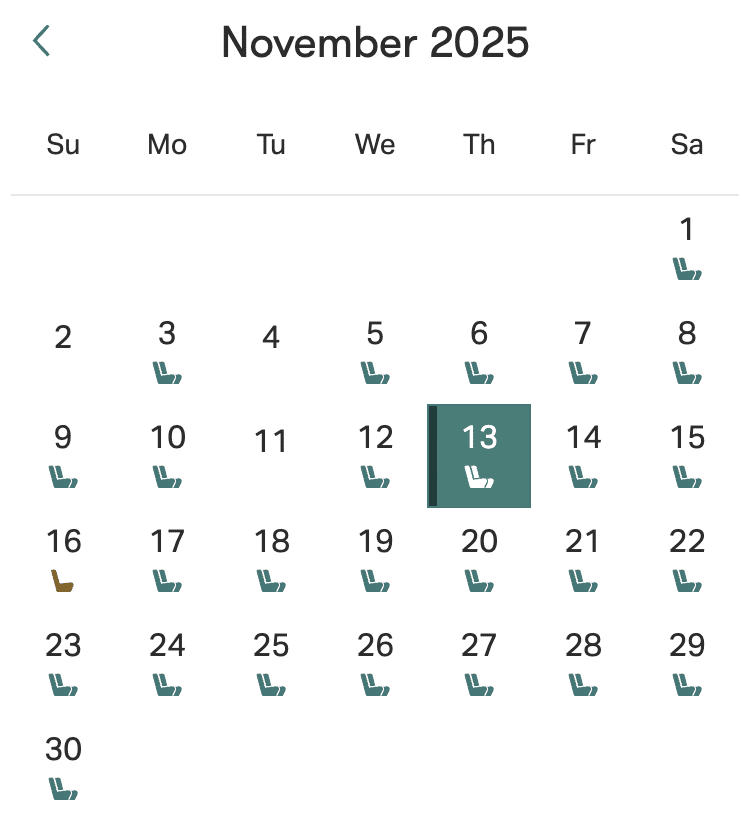
If you’re flexible with dates, use the calendar to quickly spot what you’re looking for, and then finish your redemption from there.

6. Long and Ultra-Long Haul Cathay Pacific First Class
As described above, Cathay Pacific offers First Class on a few select routes.
In addition to the shorter-haul flights between Hong Kong and Beijing or Tokyo, you can also find pockets of availability to London, New York, and Los Angeles.
Flying between Hong Kong and Los Angeles or London in First Class will cost 125,000 Asia Miles, while the ultra-long flight to New York will cost 160,000 Asia Miles.


Of these, I’d say that it’s a much better deal to fly to Los Angeles or London, since you get a similar amount of time in the skies (roughly 14 hours to LHR/LAX versus 15 hours 40 minutes to JFK) for 35,000 miles less than flying to New York.
At the time of writing, there were small pockets of availability to New York and Los Angeles, but more ample award space to London.
Whenever possible, try to base your Cathay Pacific First Class flight out of Hong Kong, since you’ll have access to the excellent lounges on offer.

7. First Access to oneworld Partner Awards
Lastly, one important factor to keep in mind for Asia Miles redemptions is that you have access to award availability starting at 360 days prior to departure.
If you’re someone who likes to plan in advance, or if you have your eyes set on some of the most sought-after redemptions in the game, then this fact plays an important role in where you want to send your miles.
For example, Japan is a hotspot for tourism these days, and so are flights with Japanese airlines in premium cabins.
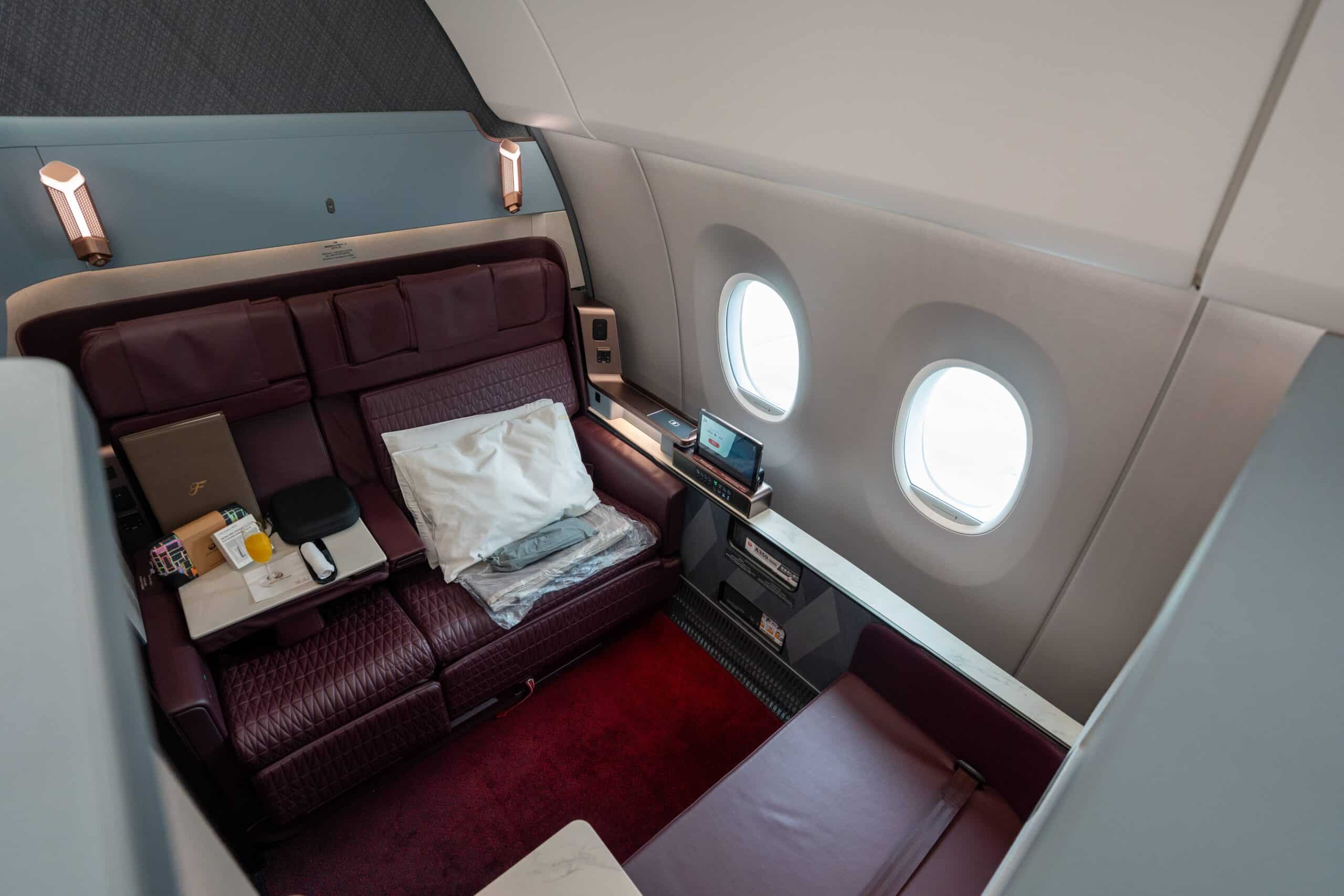
Japan Airlines is a oneworld airline, and you can also use Asia Miles to book award flights with Japan Airlines.
With its relatively extensive North American network, excellent in-flight dining, and its decadent First Class cabins, premium cabin award travel with Japan Airlines is hotly contested.
Other oneworld award programs might open up to award bookings at 355 or 330 days prior to departure, and by that point, many of the most desirable awards may have already been booked.
Therefore, if you have your heart set on premium cabins with Japan Airlines, consider strategically accumulating loyalty points in your Asia Miles account, and then pounce on the redemption as soon as it becomes available.

Conclusion
Cathay Pacific Asia Miles offers members the opportunity to book flights on its own metal and with oneworld partners.
Despite having gone through a few devaluations over the last few years, Asia Miles remains one of the most easily accessible loyalty programs for Canadians, and there’s plenty of value to be found.
For these tips and more, consider joining the Prince of Travel Community for expert advice on the best ways to earn and redeem Asia Miles!






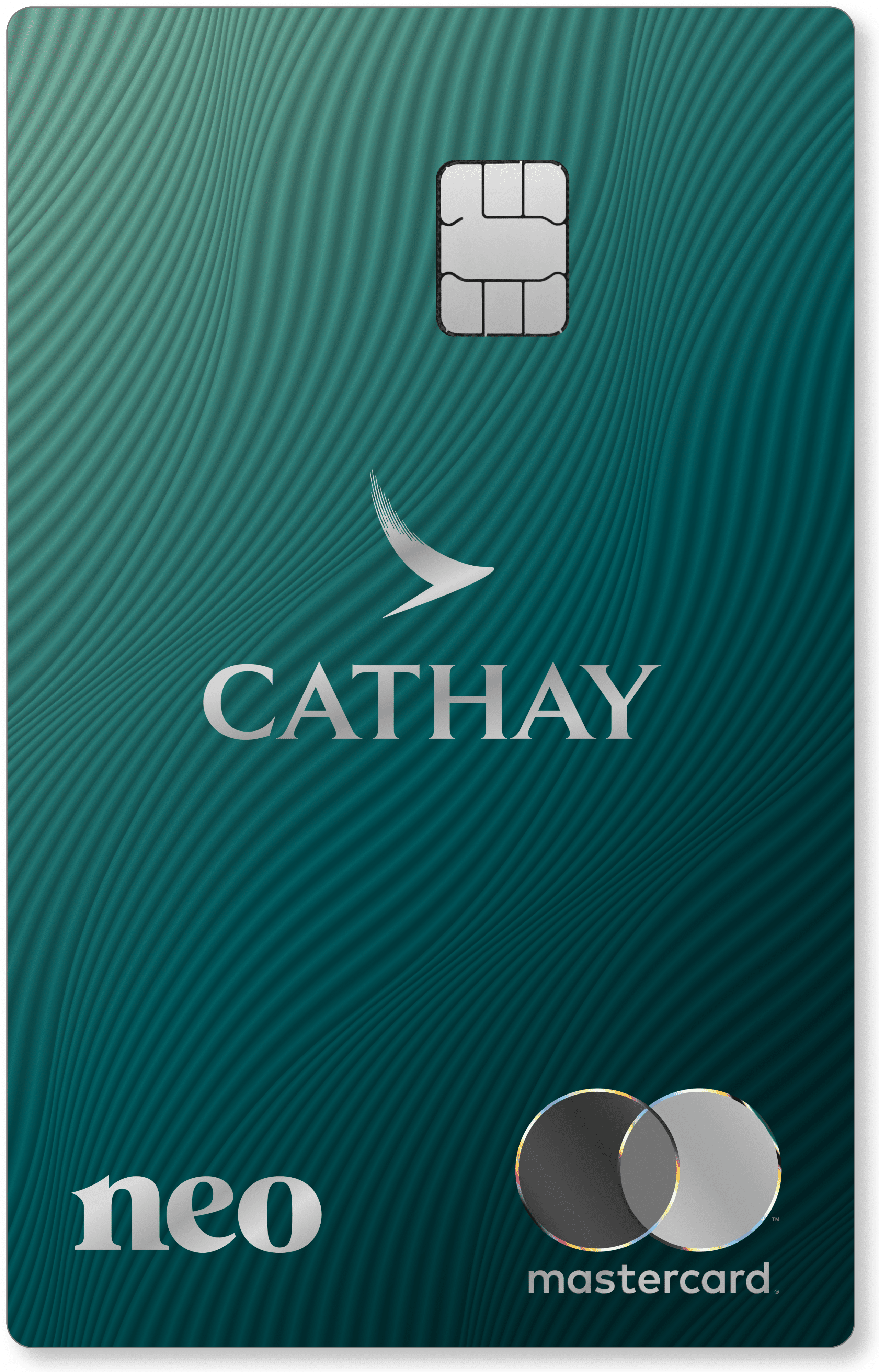
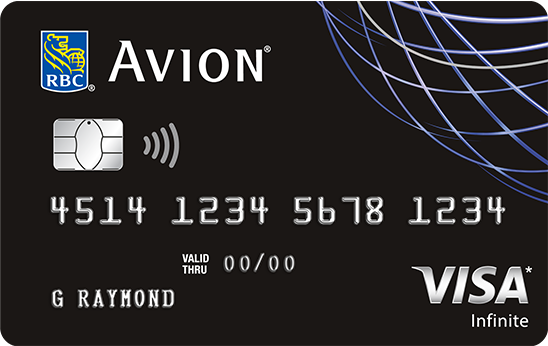
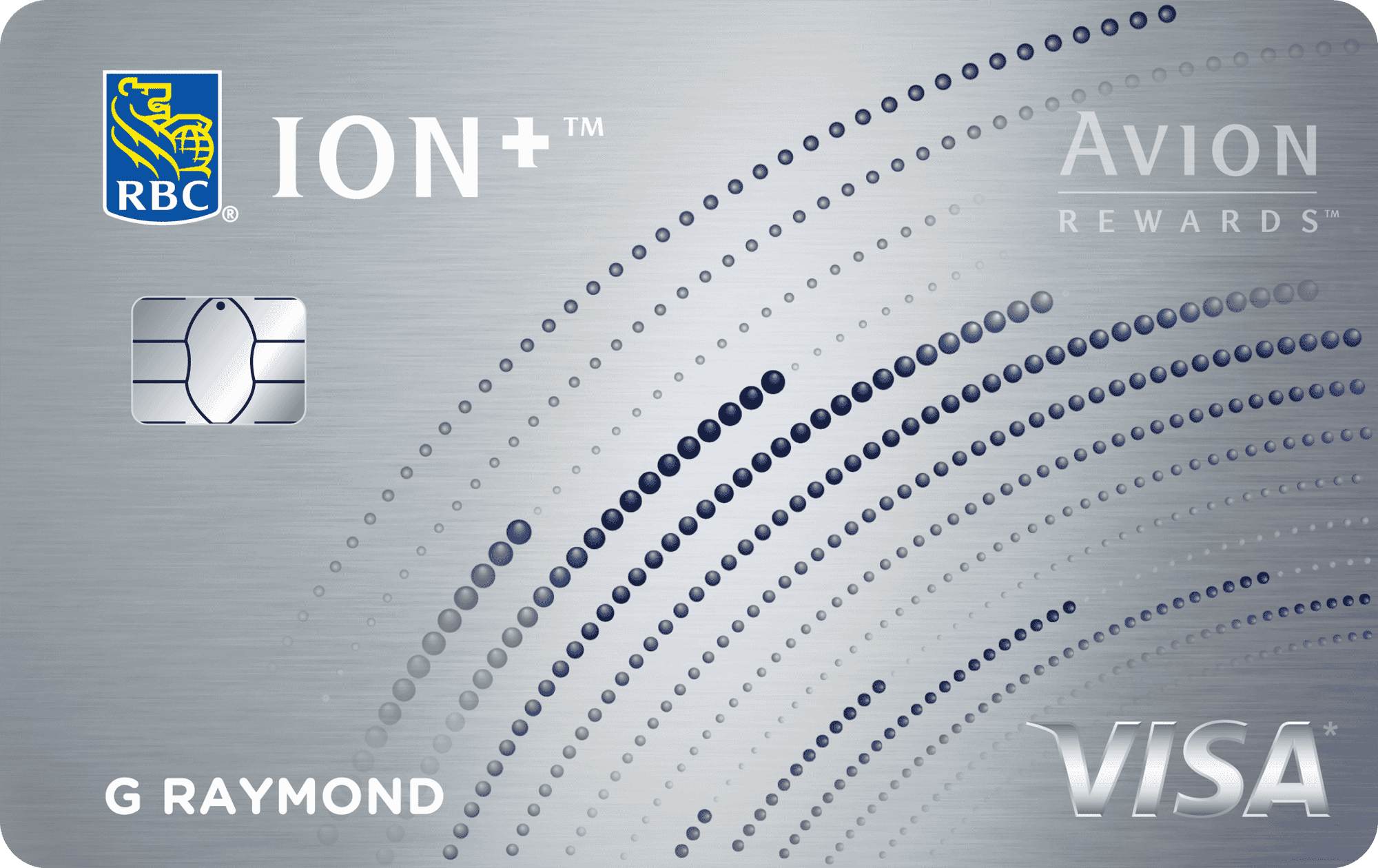



















Hi Ricky,
Could you add info about waitlist bookings? Thanks
Duly noted!
I would like to know more about waitlist booking on Asia Mile. Thanks
Thanks for the article Ricky. Question in regards to booking a one way on Qatar from SYD>YUL via DOH for 90,000 Asia Miles. When doing this search through the online portal on both "One way" and "Multi-city" it says this was unavailable. I tried to do the YUL>HND via DOH as well and was having the same issue. Any insights to the booking process? Cheers!
This is the result of the recent change to remove stopovers on one-way awards. The search engine now doesn’t support the multi-city "style" of one-way awards even if the connection is less than 24 hours.
Instead, you may need to call Asia Miles or use the Flight Award Request Form to get an agent’s help to make the booking: asiamiles.com/en/redeem-awards/flight-awards/flight-award-request.html
Asia Miles is a very nice program with many sweet spots, however there are no more stopovers on one way awards. Now if you want to fly for example SYD-HKG and then to LHR one week later, you will need to make two separate bookings. This would now cost 45000 miles for the first leg, and 65000 miles on the second leg, bringing the total to 110000 miles. You can still get 2 stopovers, one each way on round trip tickets. In addition, connecting within 24 hours counts as a layover and the award will still be 85000 miles. https://www.flyertalk.com/forum/cathay-pacific-marco-polo-club/2013542-devaluation-no-more-stopover-one-way-tickets-effective-1-april-2020-a.html
Yep, this development was covered here: https://princeoftravel.com/blog/cathay-pacific-asia-miles-cuts-stopovers-on-one-way-awards
I’ll need to update this list of sweet spots at some point!
Hey Ricky,
I’ve spent a week evaluating the Asia miles program based on your recommendation.
I came to the conclusion that I won’t be collecting any points with them because I received the following email from them.
"A number of unusual transactions and/or unusual profile information were recorded in your account. For security reasons, and in the best interests of our members, your account has been automatically suspended.
To reactivate your account, please verify your identity within one month by sending us your name, membership number and a scanned copy of your passport.
Reactivate Now
If the Asia Miles Service Centre does not receive a reply within one month of the date stated at the top of this email, your account will be terminated and all mileage credits will be cancelled.
Thank you for your attention and understanding."
It’s pretty shocking that they take away all the points if a collector does not respond within a month. What if I missed this email or was traveling with little to no internet access?
I talked to them on the phone and they wouldn’t budge on this one month expiration policy.
Now that you’ve seen the email, though, it seems like an easy enough task to send them your name, membership number, and scanned copy of your passport within one month. Doesn’t it?
I gave up earning AsiaMiles. Just too hard for an American to earn. I have yet to see a situation that transferring points from Chase or Amex, makes it enough of a deal for me to use those points. With AA and Alaskan, one can earn miles more easily and use them on Cathay flights. But your post just convinces me that many of those sweet spots will eventually be closed. And for Japan using Virgin miles on ANA, is still the best deal.
Sure, but which sweet spots haven’t been closed in the past? Just think of Alaska’s overnight devaluation of Emirates awards and American’s relentless devaluation of their partner premium charts. Sweet spots are never a sure thing – and I’d venture that Cathay’s are particularly generous and worthy of time-sensitive attention, especially if you spend some time playing around with the search engine.
thoughtful
Don’t you hate it when you publish a post and the very next week the airline goes and devalues their point system? Well at least it doesn’t affect Canadians in the ultra long distance category…
The very next day it was. And it’s not the first time it happened either (see: Aeroplan Mini-RTW video).
I do like just how ultra-long the Ultra-Long distance zone really is. I’m glad Cathay hasn’t touched that.
One should note that the occasional bonus on Avion->Asia Miles transfers is 20% rather than 30% (at least it was last year).
You’re right, don’t know why I remembered it as 30%. I’ll adjust the article to reflect this.
Most everything else is 30% it seems…
RIcky ! SHHHHH! 🙂
My lips are sealed!
wonder if AM just increased their rate? YVR-NRT is now 61K on their site for 1 way.
Just curious what it got devalued from?
Used to be 50k instead of 61k.
Damn, this is actually a surprise overnight devaluation a day after I published the article. I guess Cathay looked at the post and decided that somehow that one was too generous. I’ve updated the article to reflect this.
🙁
was looking forward to use my points.
You are an influencer, Ricky!
That’s the risk with unpublished award charts, the airline can always say "the price is the price" as they please. It’s still a pretty good deal for a top-tier business class product though!
Would you better be off transferring your RBC Rewards to Cathay Pacific Asia Miles compared to AA Advantage Miles then? I assume that the exchange 1:1 ratio between RBC to Cathy Pacific miles is more impressive then the current bonus 1:0.84 to AA.
In general I’d prefer to transfer to CX, unless I’m trying to book one of AA’s non-Oneworld partners like Etihad.
What are the taxes and fees for flying CX from YYZ to HKG and then on to Europe? I tried to search on Asia Miles but it won’t show me since I don’t enough points.
Looks like 1,840 HKD so about $300.
That’s very reasonable. Thank you.
Thanks for the post! I’ve been scratching my head over my bucket of Asia Miles and Alaska Miles, and how to use them effectively together. Stitching together a trip to Asia.
@bingo: Asia Miles expires after 3 years in June, regardless of your activities. It is annoying!
Their sweet spots largely overlap, and I very much think that Asia Miles has an advantage because of how much easier you can earn them. Going forward I’m concentrating on Asia Miles for Cathay and JAL, and saving my Alaska miles for those all-too-special Emirates First Class experiences.
That Qatar route looks mighty tempting!
I checked out the RBC card page, and was hoping to find language on points expiry – I understand that’s likely not the place, but do you have a resource on the expiry of certain programs and points anywhere?
Yep as Mer said above, Asia Miles expire three years after you earn them regardless of activity. So you’d better have a plan to redeem every Asia Mile you earn!